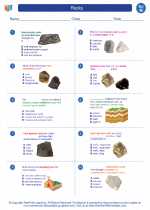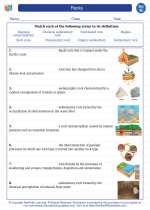Calcium Carbonate
Calcium carbonate is a chemical compound with the formula CaCO3. It is a common substance found in rocks as the minerals calcite and aragonite, and is the main component of pearls and the shells of marine organisms, snails, and eggs.
Properties
- Solubility: Calcium carbonate is sparingly soluble in water, but readily dissolves in acids, such as hydrochloric acid.
- Appearance: It occurs as a white, odorless powder or colorless crystals.
- Use: It is widely used in the construction, pharmaceutical, and agricultural industries.
Formation and Occurrence
Calcium carbonate forms in the ocean and in caves as stalactites and stalagmites. It can also precipitate out of water as the mineral travertine. Many marine organisms, such as coral, foraminifera, and mollusks, use calcium carbonate to build their shells and skeletons.
Chemical Reactions
Calcium carbonate reacts with acids to produce carbon dioxide gas, water, and a calcium salt. For example:
CaCO3 + 2HCl → CO2 + H2O + CaCl2
Uses
Calcium carbonate has many industrial applications, including:
- As a filler and pigment in paper, plastic, and paint production
- In the production of lime and cement
- As a dietary supplement for calcium
- In antacids to relieve heartburn and indigestion
Study Guide
To understand calcium carbonate, students should focus on its chemical composition, properties, and industrial applications. They can also explore its role in natural formations such as caves and marine ecosystems. Additionally, students can investigate the environmental impact of calcium carbonate mining and its use in various industries.
.◂Science Worksheets and Study Guides Eighth Grade. Rocks

 Worksheet/Answer key
Worksheet/Answer key
 Worksheet/Answer key
Worksheet/Answer key
 Vocabulary/Answer key
Vocabulary/Answer key
 Vocabulary/Answer key
Vocabulary/Answer key
 Vocabulary/Answer key
Vocabulary/Answer key
